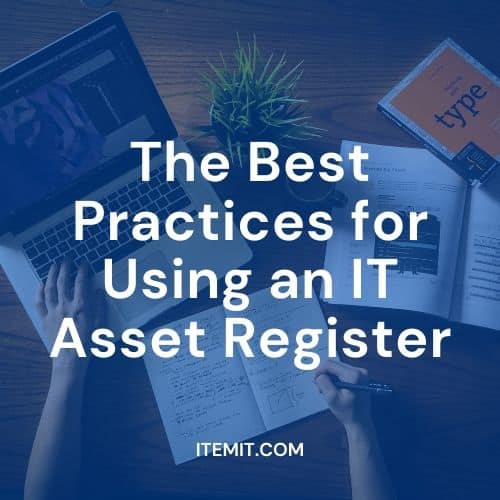An IT asset register gives you the control and confidence you need over your IT assets. With an IT asset register, you’ll be able to view crucial financial information, as well as verify that all of your colleagues have everything that they need to perform their duties.
So, what is an IT asset register? It’s effectively a list of all of your assets related to Information Technology. So, you can index your laptops and phones, for example, and information added to them.
With IT asset management software, you’ll be able to add more information to your assets, meaning you can track depreciation, maintenance, asset damage, all in one easy-to-use place.
To find out more about IT asset registers, you can read our blog: What is an IT Asset Register?
Creating your IT Asset Register
You may already have a list of your IT assets, but if this is in a spreadsheet, you’ll already know that it’ll be difficult to find things, edit information, and update everything.
So, the best way to create your IT asset register is to use a streamlined IT asset management app. This way, you’ll be able to create your inventory, add tags and asset information, and start tracking your IT assets with ease.
You’ll be able to import your IT asset data from your spreadsheet, but you can also start from scratch. IT asset management systems give you greater control over the information you can add to assets, and they increase the visibility you have over assets.

So, what you’ll do is log your assets as digital profiles in your IT asset management system, which will then create your IT asset register as you go.
Then, you’ll use asset tagging to link your physical assets to their digital profiles. This way, you’ll just need to scan the tag to edit an asset’s profile, with no need to search for them on your system, as you’d need to with a spreadsheet.
There are a few asset tag options at your disposal:
- QR Code Asset Tags: These contain unique information and are the easiest to implement and use in your IT asset management.
- Barcodes: Barcodes are similar to QR code asset tags, but they can hold less information and are less customisable.
- RFID tags: RFID tagging is also a possibility. It allows you to scan tags without needing a “line-of-sight”. There are many drawbacks and benefits to using RFID tagging, which you can ask us about by clicking the button below.
How an IT Asset Management System Will Help your Business
Overall, the ability to track, monitor, and export asset information helps give you the necessary control over assets and their profiles.
With an IT asset management system, you’ll be able to add maintenance history to your IT asset register, against unique assets, for example. This way, you’ll be able to view which assets have had multiple bouts of maintenance and make a decision about whether or not they’re more economical to replace.
You’ll also be able to book assets out and track your asset finances, along with a lot more functionality that you simply don’t get with a spreadsheet.
To find out more about how itemit can track your IT assets, you can book a demo with us using the button below.
You can also contact us here or fill in the form below to start your free trial.
Or, you can check out these blogs:
How to Use Small Tool Tracking Software for Construction Equipment Tracking
How to Use Fixed Asset Register Software to Improve your Asset Tracking
The Benefits of Hands-Free Equipment Maintenance Tracking
Create your IT Asset Register Now
Start your free 14-day trial now
Instant access. No credit card details required.


